What is it?
Concealed door installation is an ultra-modern way of decorating an entrance/exit using concealed hinges. Thanks to the internal frame, the door will be invisible and the feeling of a blank, uniform wall will be created.
Today, hidden doors perform slightly different functions than before. If, since the Middle Ages, invisible entrances hid secret rooms behind them, which strangers were not supposed to get into, today the main purpose of installing a hidden door is to dissolve the door leaf itself in the wall, thereby achieving a minimalist design and visually expanding the space.
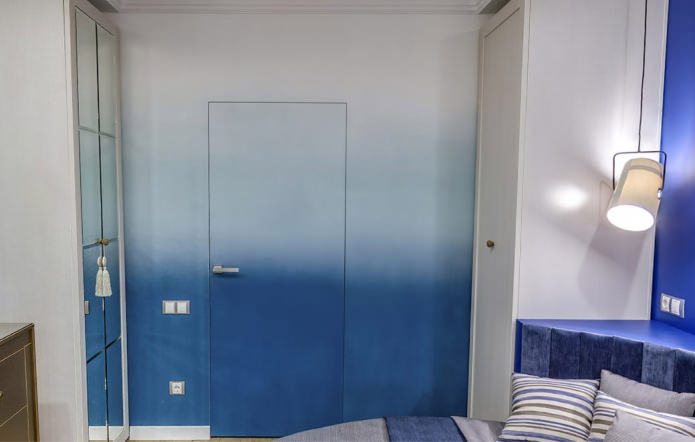
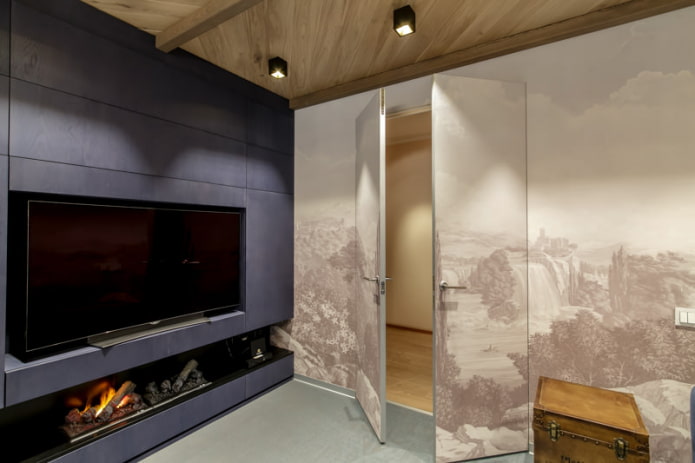
The most advantageous place for hidden doors in the house is a corridor or hallway with many entrances and exits. By replacing standard doorways with frames with hidden ones, you will get a spacious room with neat walls without unnecessary accents.
Hidden doors in the living room perform the same functions as in the hallway. But in the bedroom, with the help of a secret door, you can hide a dressing room, which guests should not enter. Storage rooms (for example, in the kitchen), offices and other personal rooms can also be hidden.
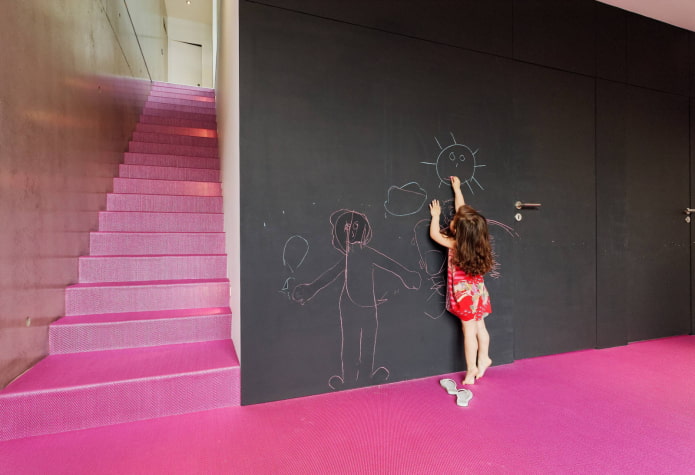
Pros and cons
Advantages of hidden doors in the interior:
- Invisibility. This gives more options for wall decoration and allows you to hide insignificant spaces, such as storage rooms.
- Variability of decoration. If ready-made factory doors from the manufacturer have a certain color that is difficult to match the walls, then custom-made hidden doors can be painted in any shade or even pasted over with wallpaper.
- Compactness. The internal frame, hidden hinges and the absence of trims allow you to install a hidden door even in narrow passages.
- Savings. Moldings are often more expensive than the door leaf, but in the case of hidden doors, you do not have to buy it.
- A large selection of sizes. The height and width are practically not limited by anything – you can order a model with standard dimensions or a non-standard leaf from floor to ceiling. Of course, its cost will be higher — but you will be able to implement any design solution.
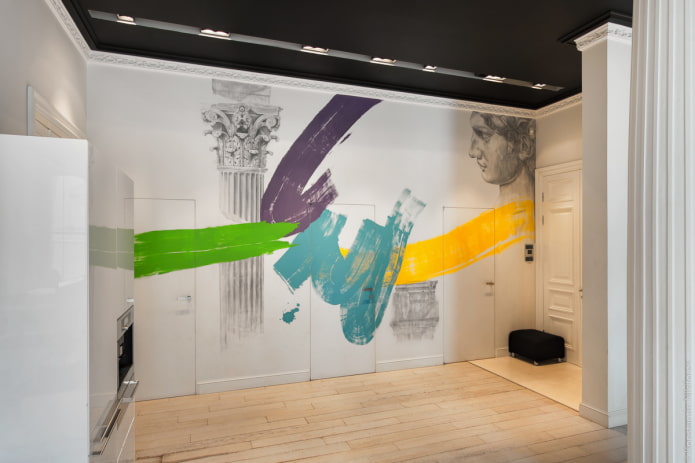
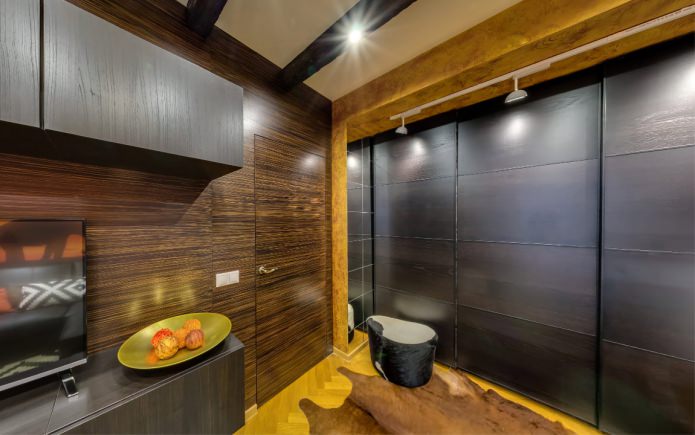
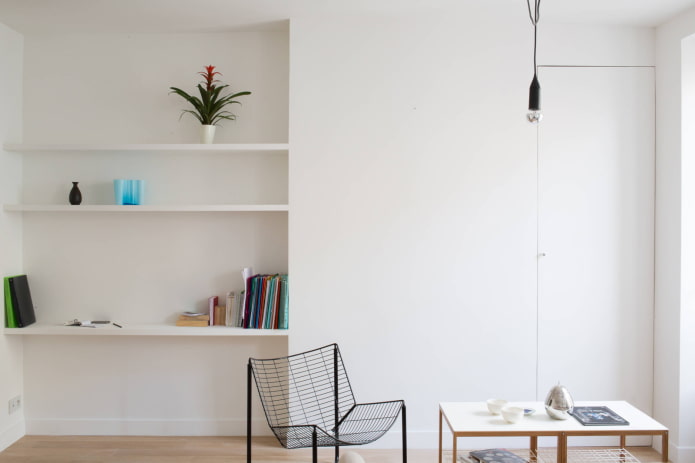
Disadvantages of invisible openings:
- High price. Although interior doors do not require frames and trims, the door leaf itself can cost a pretty penny. The most budget option is a standard size (70*200, 80*200) without finishing.
- Complex installation. Since hidden interior doors in the interior are still a novelty, not every craftsman is ready to take on such work and do it efficiently. The average cost starts from 3,000 and reaches 5,000-6,000 per unit.
- Many nuances. If ordinary models can be installed during decorative finishing, then hidden solutions are mounted at the stage of rough work.
- Limited styles. Hidden doors look ultra-modern, so they are mainly suitable for today’s popular styles: modern, minimalism, loft. At the same time, it is almost impossible to fit them into classic, Provence or Baroque styles.
- One-sided beauty. Aesthetic fit and invisibility in standard openings will be only on one side: on the “inside” there will be a recess that will be clearly visible even when decorating the space with the same materials. This is due to the small thickness of the door, which makes hidden installation possible.
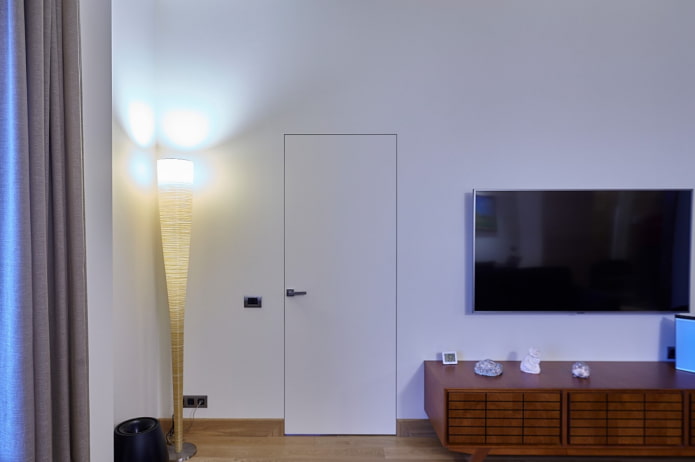
The photo shows a hidden door in the interior of the hall
Design options and their features
Hidden doors in the interior come in two main types, each of which has its own pros and cons.
Finished products with finishing
Factory painting, on the one hand, simplifies the installation process: it is enough to install a hidden frame and hang the door. But on the other hand, it is impossible to achieve the effect of complete invisibility, because it is almost impossible to match the shade of paint or wallpaper exactly to the tone of the door.
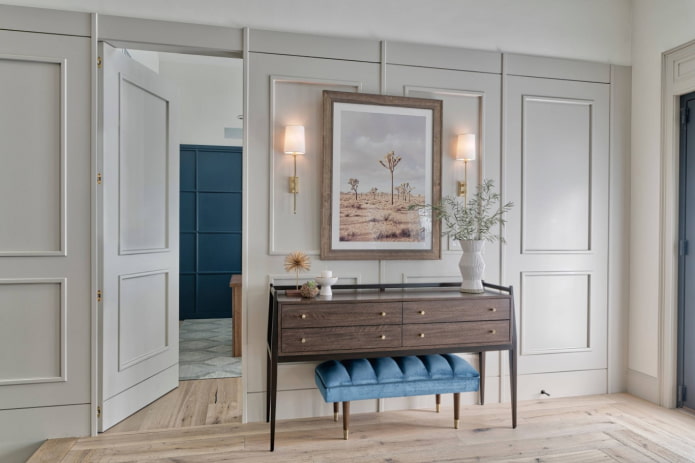
The photo shows a secret entrance in the wall
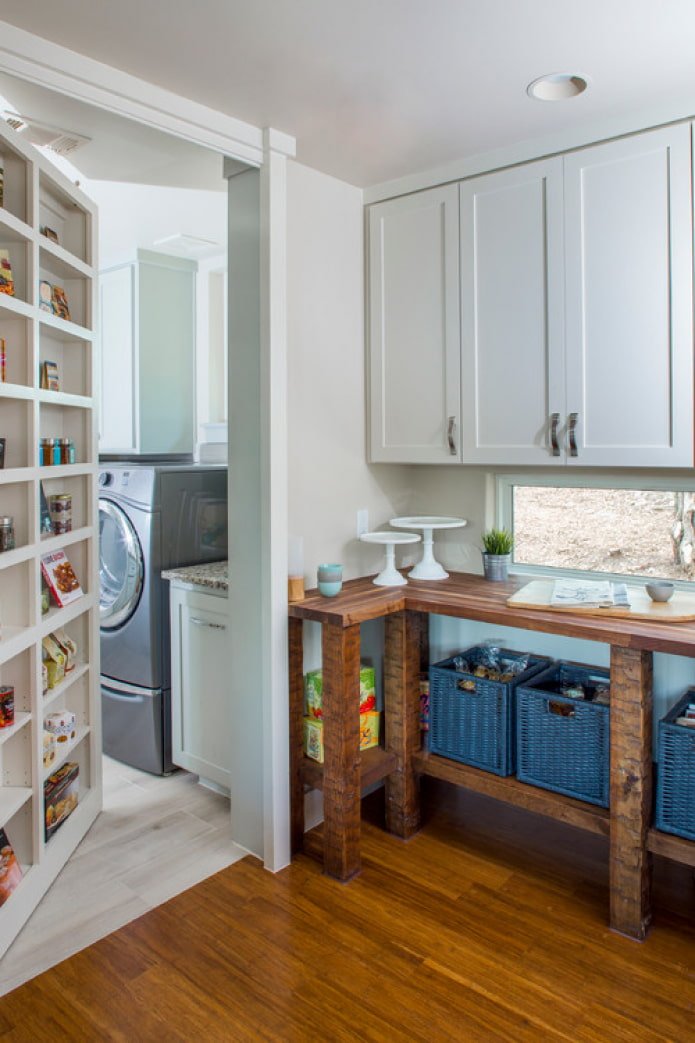
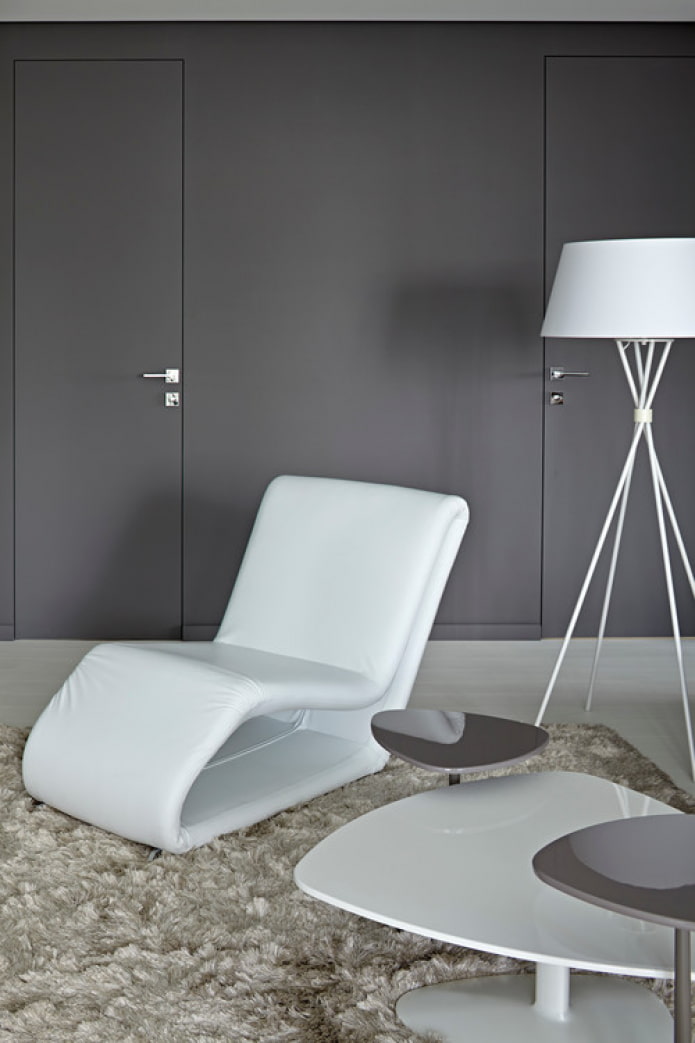
Doors for finishing
They are cheaper than the first ones, but require additional work to create invisibility. After installation, the canvas is painted to match the wall, pasted over with wallpaper or finished in another way, repeating the walls – from the inside and outside. The only “con” is that factory paint is, in most cases, of higher quality and more durable.
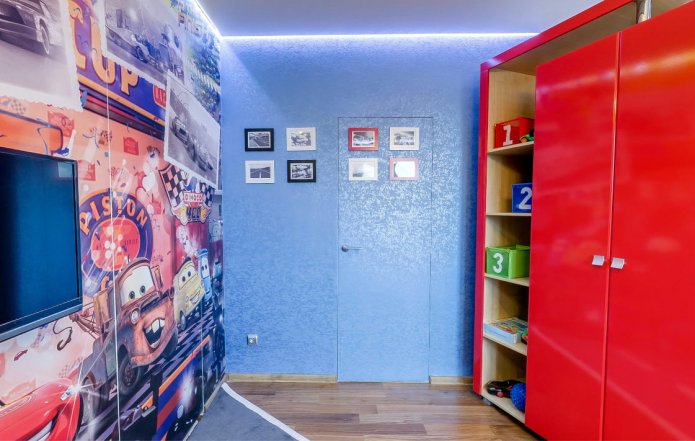

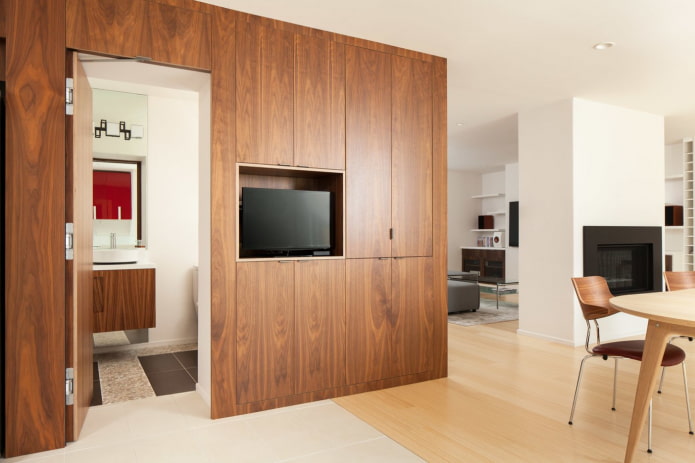
In the photo wooden panel on hidden hinges
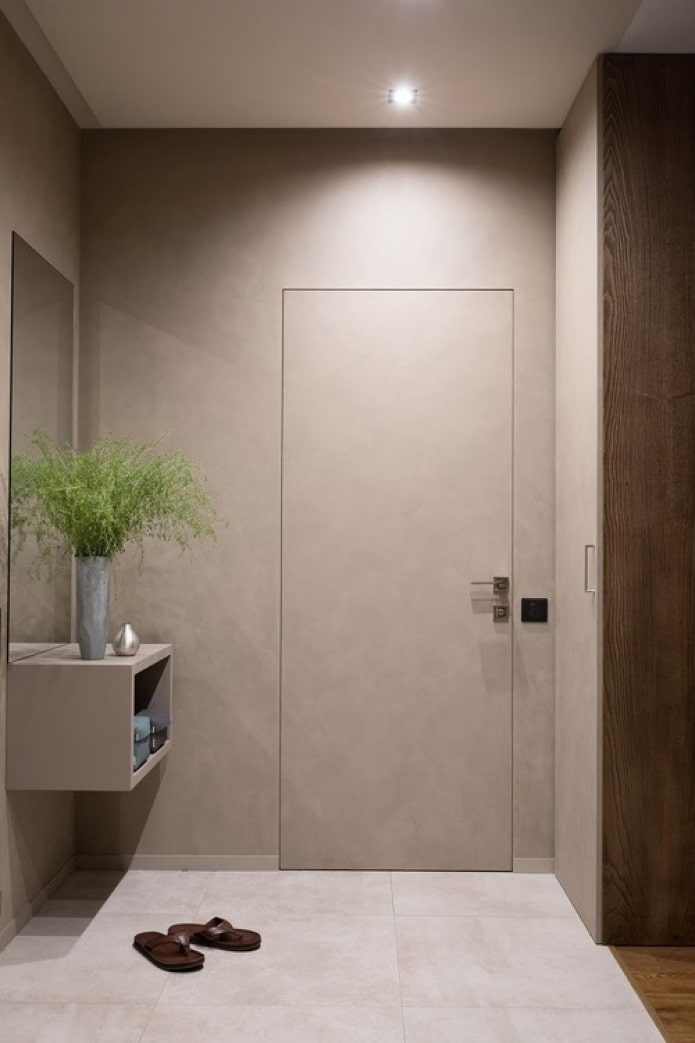
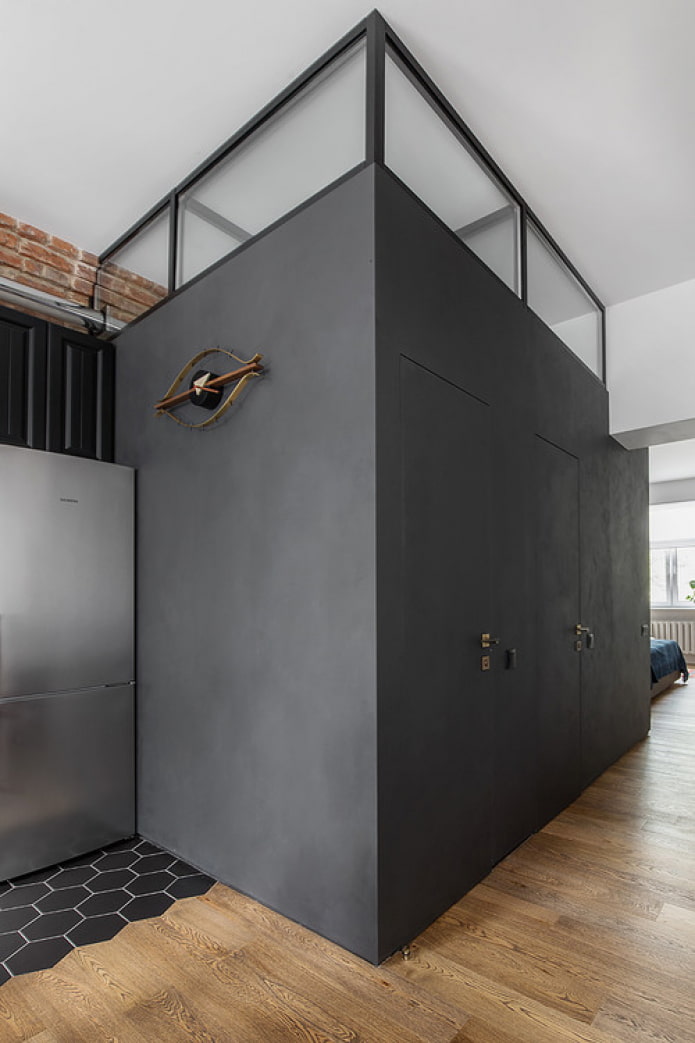
A hidden door does not necessarily have to be of a standard shape: the entrance can also be hidden using a rack door or a secret opening in a sliding wardrobe. These methods are also completely invisible and do not disturb the design of the room.
There are also glass panels: they are installed in place in a secret way, do not disturb the interior design, but do not merge with the wall and do not require painting.
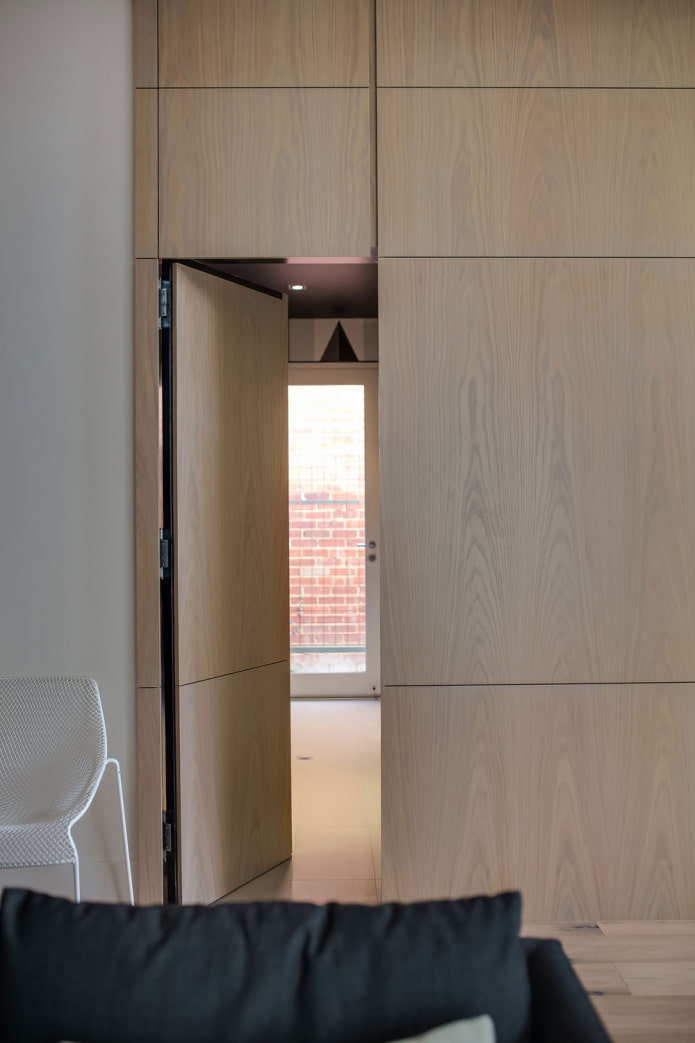
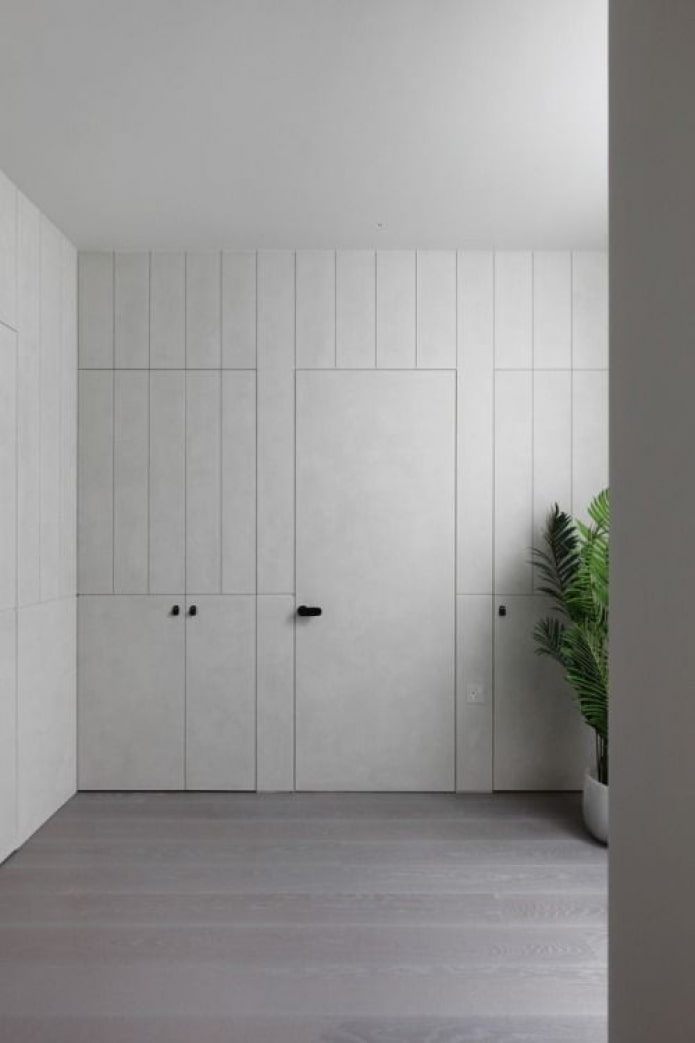
Examples of design
As already mentioned in the previous section, hiding the entrances to apartment or house is easiest to do with finishing the canvas in the same tone as the walls. The same wallpaper, paint or other material is used for this.
Even laminate, slats or other wooden finishing are fixed to the interior canvas. The main rule in this case is to decorate the wall at the same time as the door, in order to lay it out in a single contour.
Important! Experts usually do not recommend gluing heavy tiles or porcelain tiles to the opening panel – this will put additional stress on the hinges and may damage them.
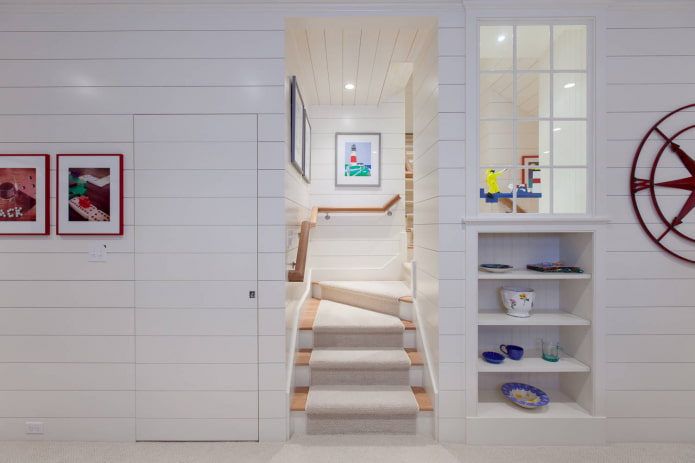
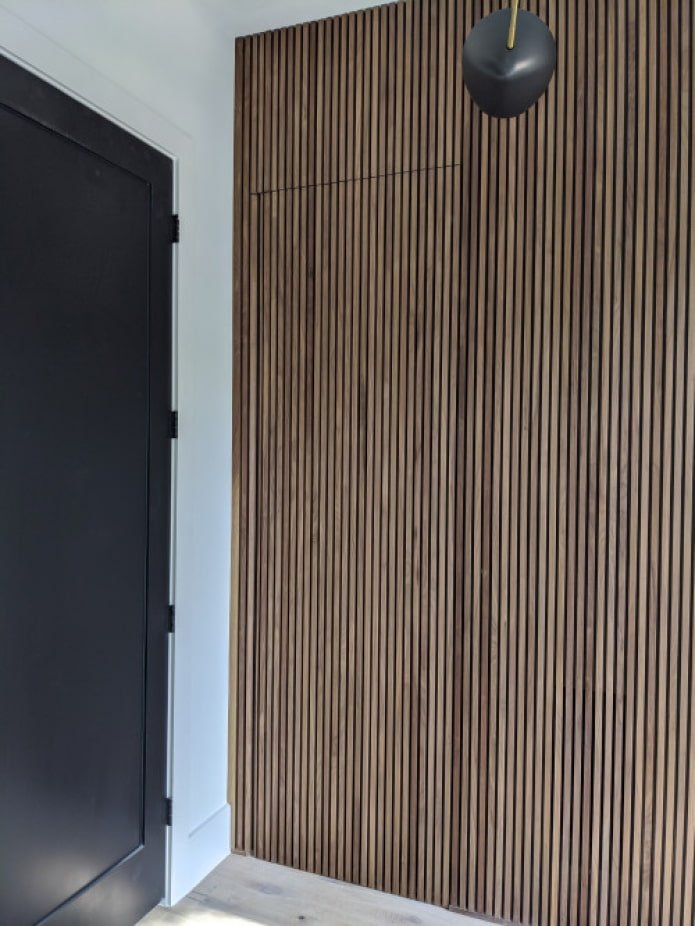
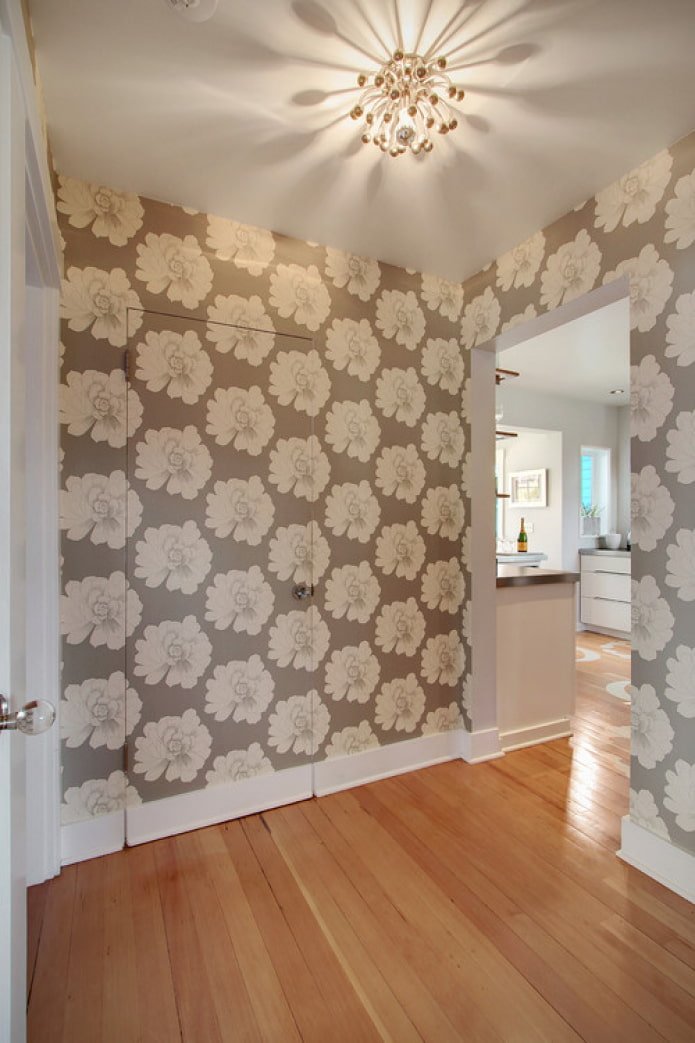
Additionally, you can use original decor options: paint the wall with the door to half the height, make chaotic strokes of paint, covering both surfaces.
Advice! It is not necessary to repeat the wall finish – for high doors you can use ceiling materials on top and floor materials on the bottom.
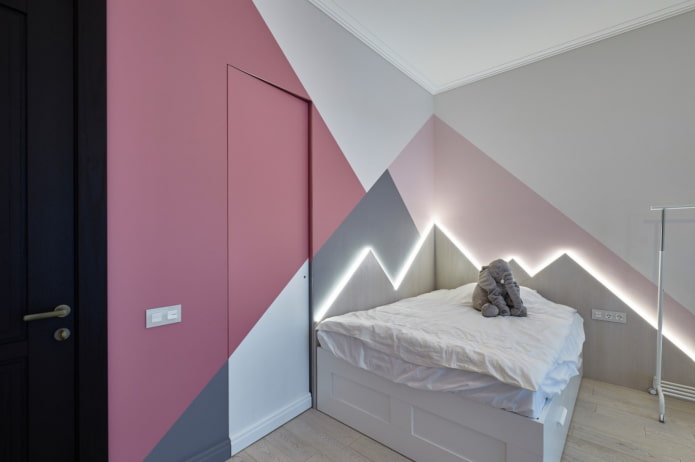
The photo shows a version of the decor of the nursery
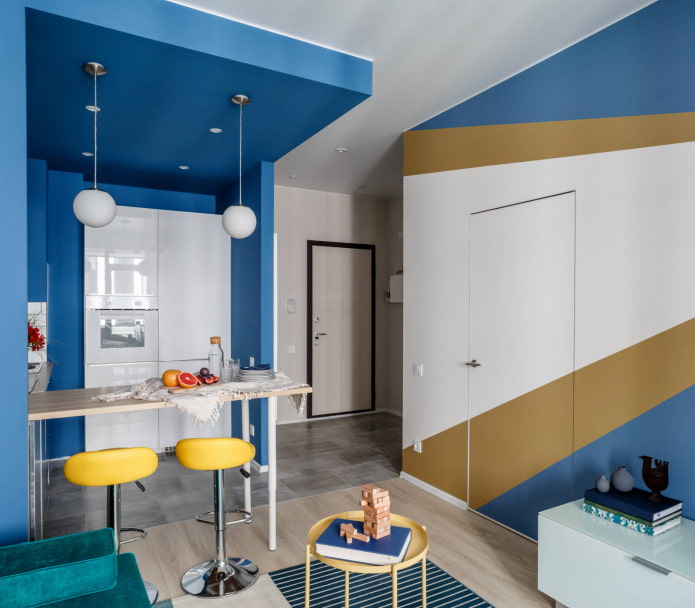
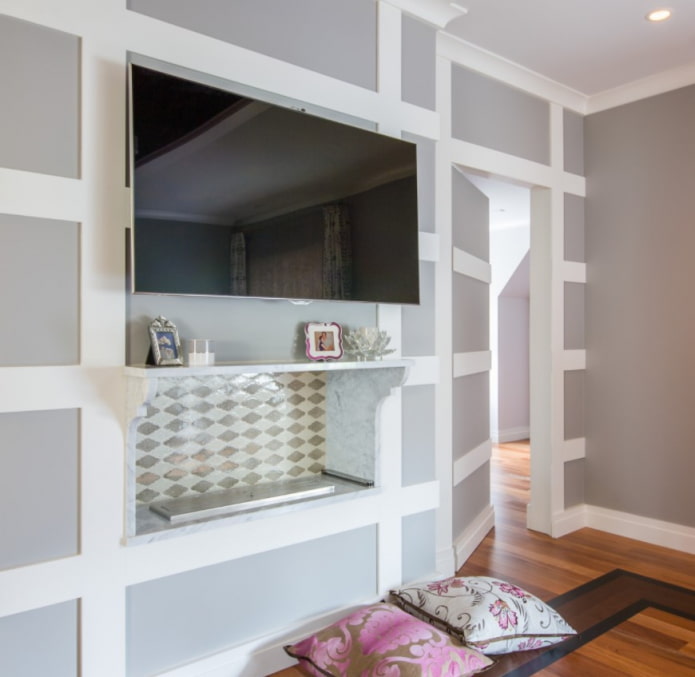
A convenient option for the hallway is mirrors. Attach several panels, one of which will be on the door. This way you will simultaneously hide the entrance and make the space visually larger.
If there are paintings or other decor hanging on the wall, attach it to the panel as well. This technique will further disguise the opening and literally dissolve it in space.
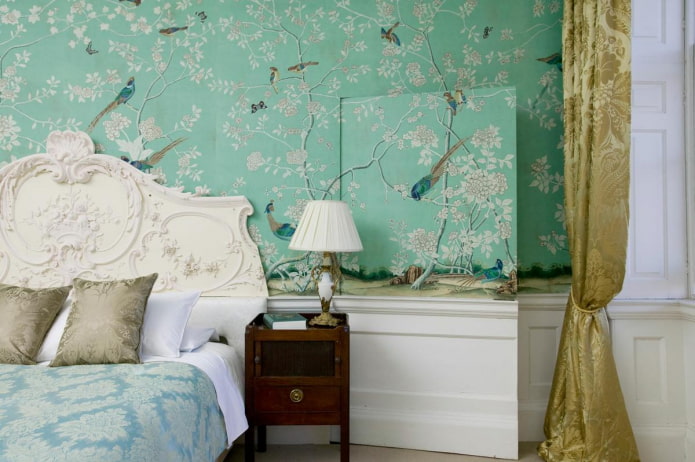
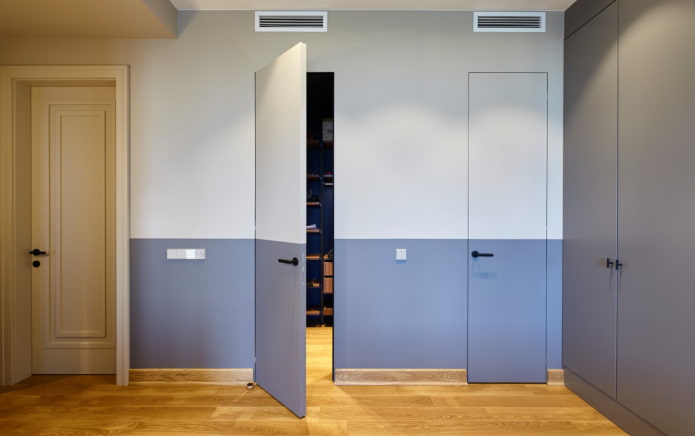
What do they look like in the interior?
The most popular today are standard models for finishing: they are the easiest to hide in the wall, suitable for any color scheme and materials.
A method using textured baguettes has become widespread among adherents of the classical style: a composition is assembled from them, fixed both on the walls and on the interior panels. This solves the problem of excessive minimalism, which is not suitable for baroque, classic, art deco.
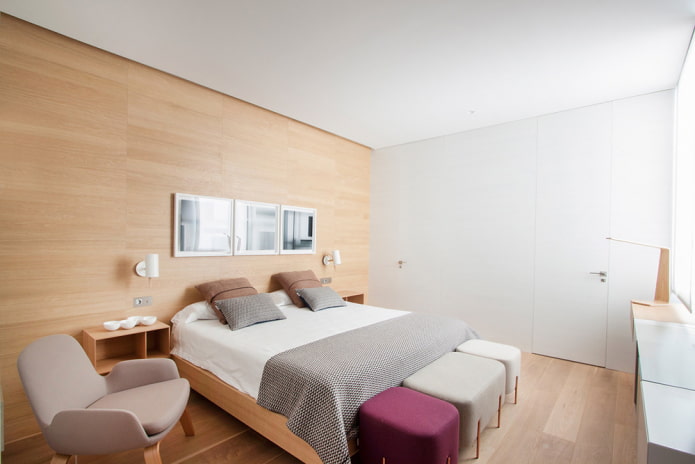
The photo shows a secret passage from the bedroom to the dressing room
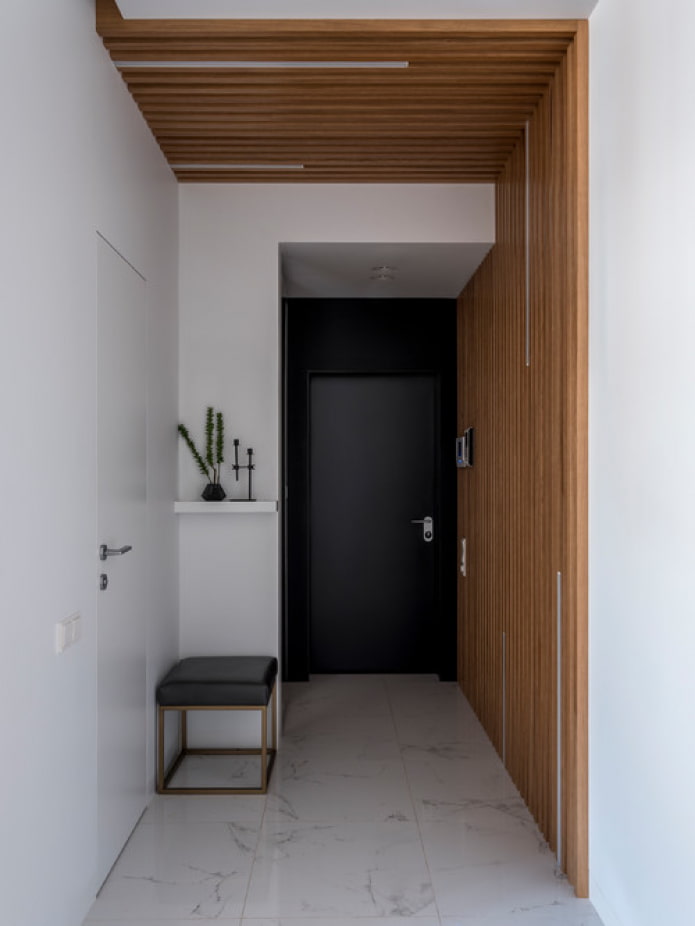
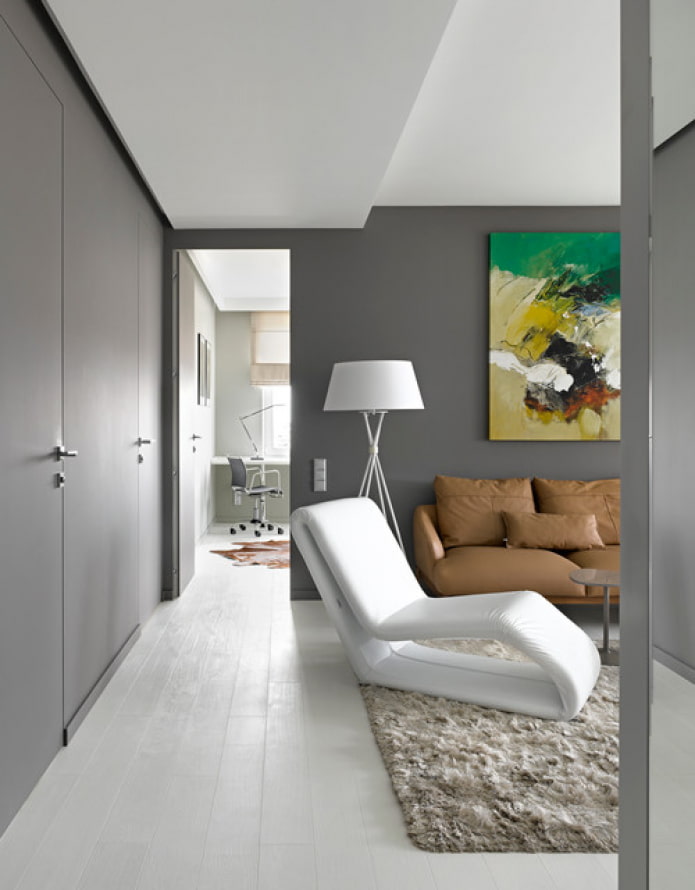
In some rooms (for example, in children’s rooms) it is appropriate to use black chalkboard paint: firstly, black masks the gaps, and secondly, the child will be able to paint the walls without damaging the repair.
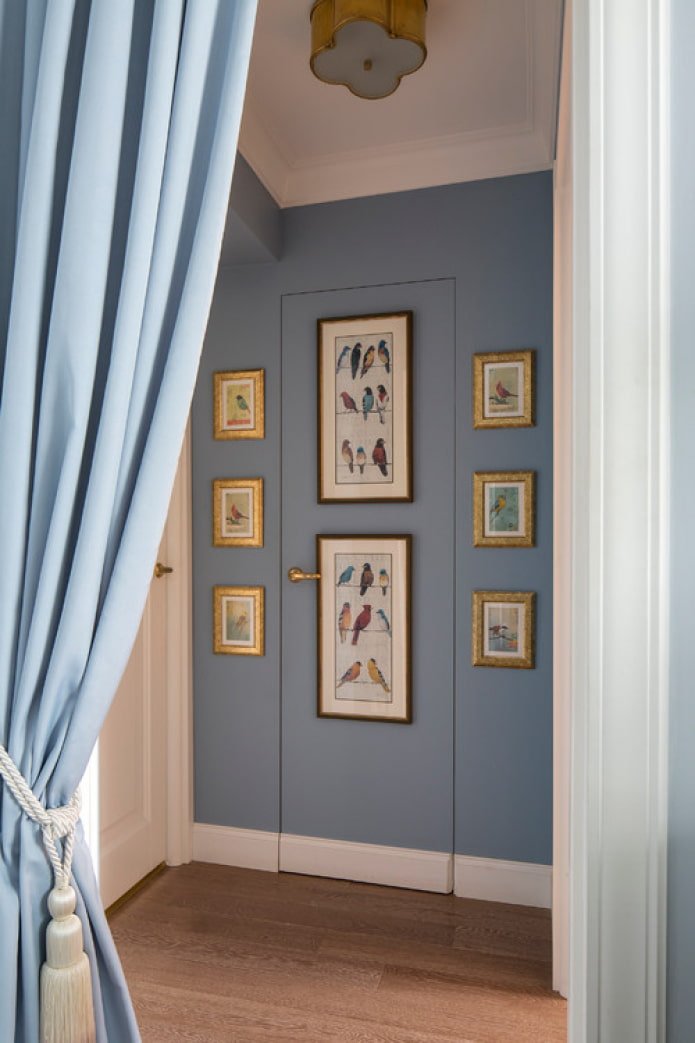
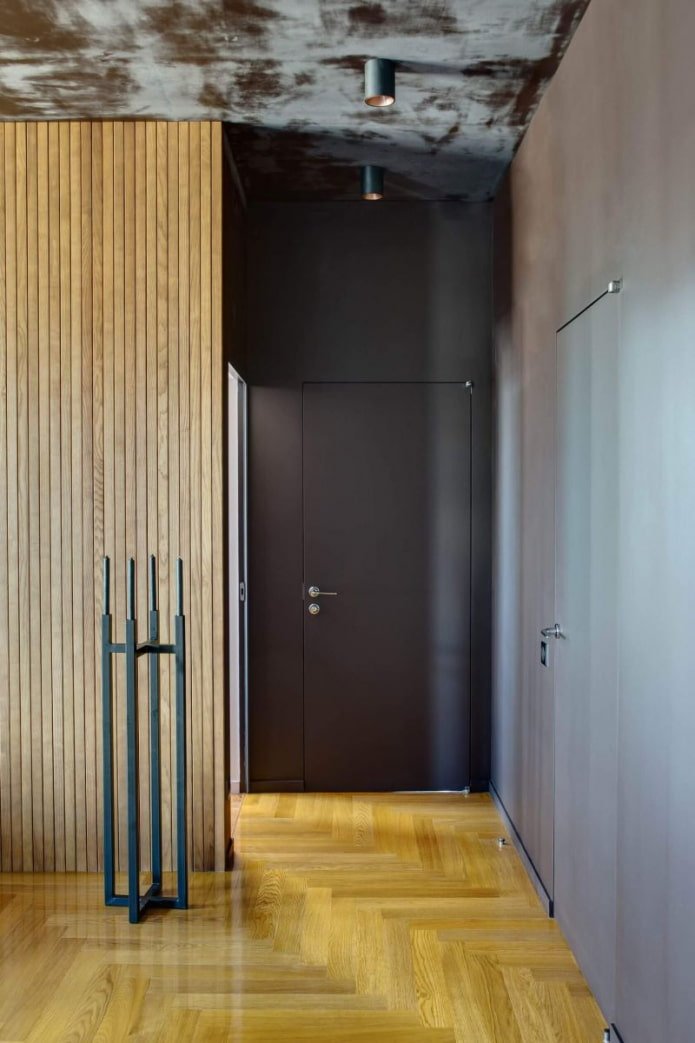
How to decorate the doorways in your apartment is up to you. We just told you about another modern way of dividing space.

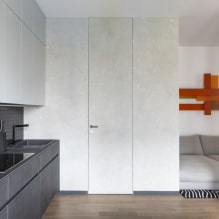
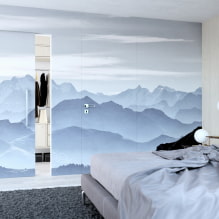
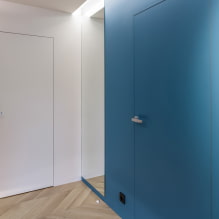
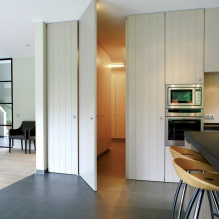
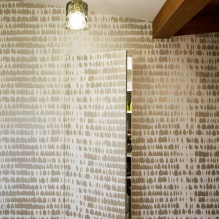
Now reading:
- Children’s room in a marine theme: 45 photos and interior design tips
- Creating a Topiary: Step-by-Step Guide with Photos and Videos, 59 Inspirations.
- Hallway in loft style: 55 designer photos for your interior
- Lighting in the hall: 60+ ideas, tips on choosing and arranging lamps.
- Lilac wallpaper for walls: 55 best ideas and photos for your interior.